High Performance Liquid Chromatography
HPLC
High-Performance Liquid Chromatography (HPLC) is a technique in analytical chemistry used to separate, identify, and quantify each component in a mixture. It relies on pumps to pass a pressurised liquid solvent, containing the sample mixture, through a column filled with a solid adsorbent material. Each component in the sample interacts slightly differently with the adsorbent material, resulting in different flow rates and thus the separation of components as they flow out the column. HPLC has been used for: manufacturing (production process of pharmaceutical and biological products), legal (detecting performance enhancement drugs in urine), research (separating the components of a complex biological sample, or synthetic chemicals), and medical (detecting vitamin D levels in blood serum) purposes. HPLC was originally developed for the analysis of organic acids secreted by photosynthetic microbes, including cyanobacteria and algae, into media, but can also be used to analyse organic acids secreted by any microorganism cultivated in liquid medium.
See below for a protocol that describes the analysis of secreted organic acids in extracellular media, using HPLC.
A. Reagents and Preparation
Reagents
- Cyanobacterium Synechococcus sp.
- Liquid culture (cyanobacteria or other microorganism)
- 8 mM H2SO4: Dissolve 0.898 ml H2SO4 (98%) in 1000 ml dH2O. Filter with 0.45 µm filter unit.
- 50 mM succinate stock solution: Dissolve 14.76 mg succinate in 25 ml dH2O. Store at -20°C.
- 50 mM α-ketoglutarate stock solution: Dissolve 18.26 mg α-ketoglutarate in 25 ml dH2O. Store at -20°C.
- 50 mM acetic acid stock solution: Dissolve 71.4 µl acetic acid in 25 ml dH2O. Store at -20°C.
- 50 mM pyruvate stock solution: Dissolve 88.65 µl pyruvate (98%) in 25 ml dH2O. Store at -20°C.
- 50 mM α-ketoisocaproate stock solution: Dissolve 154.19 µl α-ketoisocaproate (>98%) in 25 ml dH2O. Store at -20°C.
- 10 mM organic acids standard mixture: Mix 2 ml of each of the five 50 mM organic acid standards above to give a 10 mM solution of mixed organic acids (final volume 10 ml). Perform a serial dilution of this mixed organic acid solution to generate a range of concentrations appropriate for constructing a standard curve; for example, 5 mM, 2 mM, 1 mM, 0.5 mM, 0.25 mM, 0.1 mM. The range in concentrations of the standard curve should span those concentrations measured in the extracellular samples. Store at -20°C.
Equipment
- Microcentrifuge
- Surveyor Plus HPLC composed of: Surveyor LC pump, Surveyor Autosampler (AS), Surveyor Photo Diode Array (PDA) Plus detector, Surveyor Refractive Index (RI) Plus detector
- Aminex fermentation monitoring column (150 mm by 7.8 mm), stationary phase Polystyrene-divinylbenzene sulfonic acid resin, 9 μM particle size, 8% cross linkage
- Micro-Guard Cation H Cartridge guard column, 30 x 4.6 mm, hydrogen form, pH range 1-3, for Aminex® hydrogen-form columns
- ChromQuest™ Software and ChromQuest™ Software Platform
Sample Preparation
- Using a pipette, remove a 2 ml aliquot from the liquid culture, place in a 2 ml Eppendorf tube, and centrifuge at 13,000 x g for 10 min to pellet the cells.
- Remove and keep the supernatant, this is the extracellular medium that contains secreted organic acids. At this point the supernatant may be frozen at -20 °C for later HPLC analysis or analysed immediately as described in the following steps.
- Filter 500-700 µl of the sample supernatant into chromatography vials using a 1 ml disposable syringe and a 0.45 µm-pore-size filter to remove particles that may interfere with the organic acid detection and potentially clog values and lines. Repeat individually for each organic acid standard sample that will be used to construct the standard curve. Cap the vials. These are now ready for HPLC analysis.
B. Procedure
- Use 8 mM H2SO4 as the mobile phase for isocratic elution.
- Sequentially increase the column temperature to 35 °C and then 45 °C using the Chromquest software (use a mobile phase flow rate of 0.1 ml min-1). Set the Refractive Index Detector to 50 °C.
- Once the column has reached 45 °C download a method for measuring samples with the following settings below. These settings are a standard protocol for the fermentation monitoring column, the only optimisation is the increased run time to ensure the sample has completely eluted from the column.
- Wait 10 min for baseline to stabilise, place vials in the autosampler tray, create a new sequence file for your run, autozero the PDA Plus and RI detectors, and start the run.
- Surveyor LC pump: total flow, 0.5 ml/min; pressure limits, 0-1,100 psi; run time, 40 min.
- Surveyor PDA Plus: run time, 40 min; scans, 200-360 nm, scan rate, 1.0 Hz; bandwidth 1 nm.
- Surveyor AS: injection volume, 25 µl; needle height from bottom, 2.0 mm; syringe speed, 8 µl sec-1; flush speed, 70 µl sec-1; flush volume, 500 µl; wash volume, 300 µl; flush/wash source, 8 mM H2SO4 mobile phase; set tray temperature to 10 °C; enable column oven control temperature to 45 °C.
- Surveyor RI Plus: run time, 40 min; data rate, 10 Hz; temperature control set to 50 °C.
Settings for Step 3
Data Analysis

- Typical chromatograms generated by the PDA Plus detector and RI detector are shown below.
- Use the Chromquest software to integrate and quantify the area under each organic acid peak.
- Create a standard curve for each organic acid by plotting the peak area vs the known concentration.
- Use the standard curves to calculate the concentrations of each organic acid in the supernatant samples. This will give the concentration of organic acid present in the extracellular media. Data can be normalised to cell count to determine the amount of organic acids secreted per cell.



